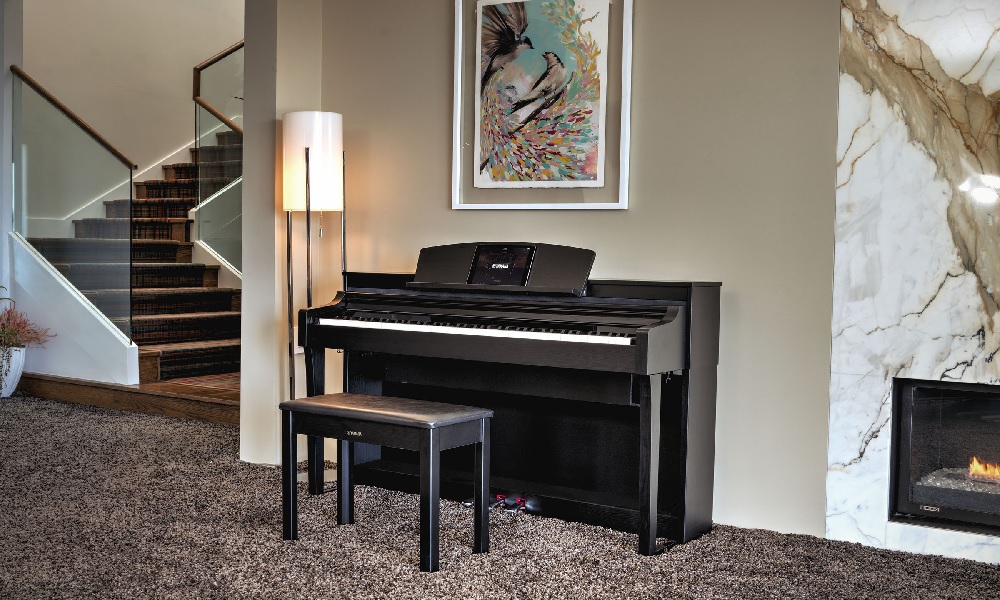A digital piano from Greene Music for instance is a type of keyboard that contains prerecorded instrument samples that can be played expressively using the keys. The keyboard category includes anything with keys, such as digital pianos, analog synthesizers, and MIDI controllers with keys. Most beginner digital pianos have static sounds, meaning that you cannot modify the characteristics of the sounds except by adding reverb or chorus effects.
Most digital pianos have MIDI capability over USB, allowing MIDI data to be recorded into a DAW, like other MIDI keyboards. This article is the definitive guide, and then visit our article on the best digital pianos for beginners. If you’re unsure how to get started in the world of digital pianos, read on for helpful tips and tricks!
What Is A Digital Piano?
A digital piano like CLP, CVP, CSP Clavinova’s in San Diego for example is an electronic musical instrument designed to simulate the sound and experience of playing an acoustic piano. Unlike an acoustic piano, which produces sound by vibrating strings, a digital piano produces sound through the generation of electrical signals that are processed by a sound chip and sent to the instrument’s speakers.
Digital pianos are designed to mimic the tactile sensation of playing an acoustic piano, with weighted keys that simulate the resistance and weight of real piano keys. Digital pianos also typically have additional features such as recording and playing music, MIDI and USB connectivity, polyphony, and various prerecorded sounds and digital effects.
In short, a digital piano is a versatile, portable instrument that offers a modern and convenient alternative to traditional acoustic pianos.
How Does A Digital Piano Work?
A Digital Piano Is, In Essence, A Computer.
When a key is pressed on a digital piano, just like a key on a laptop, it sends a signal to the internal computer, which responds with some action. On a digital piano, instead of lyrics appearing on a screen, a recording of an acoustic piano is played through a set of speakers.
This is the way the vast majority of digital pianos work. The biggest brands in the digital piano industry are constantly competing to produce the highest quality recordings of the best pianos. These recordings are called “samples.” Sound engineers will record each piano note for hours, sometimes more than a hundred times, to “map” the tone and timbre of the specific piano. The more recordings each note has, the greater the control over dynamics and pitch.
The Keys
Instead of strings, most digital pianos use electrical sensors or touch pads to detect when a key has been pressed. Pressing a key activates an electrical contact pad that closes a circuit corresponding to the specific key (which is similar to how membrane keyboards for computers work).
On the rubber contact strip, you can see that they are covered at the bottom with a conductive part, which activates the electrical contact by closing the circuit corresponding to the pressed key. You may wonder how the sensor knows how hard I’m playing. Well, you may have noticed that two points on the contact strip are coated in the conductive ink, corresponding to two pads for each key.
The position of the contact strip is designed so that the rubber strip presses on one pad before the other. This way, the piano can measure the time between activating both pads and, after some mathematical calculations, calculate the speed at which the key was pressed.
Although some digital piano models use different key activation methods, such as Yamaha’s AvantGrand models, instead of a membrane and electrical contacts, they opt for a fiber optic sensor, through which a small metal tab passes on the top of the hammer. Without requiring physical contact, the fiber optic sensor can detect when the hammer has reached a certain position and at what speed it travels by detecting when the metal tab of the hammer obscures the sensor. Using a touchless trigger also means there is no interference with the touch of the key action.





